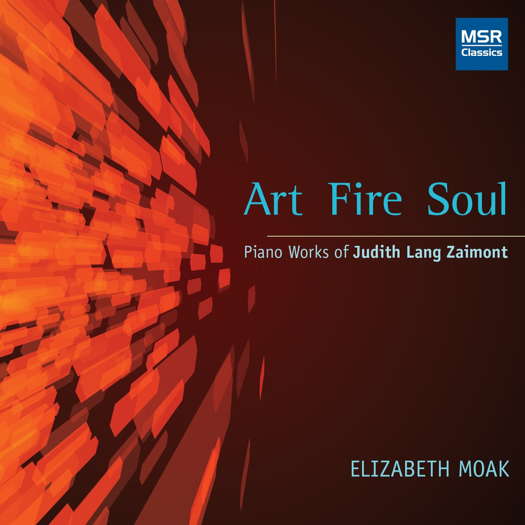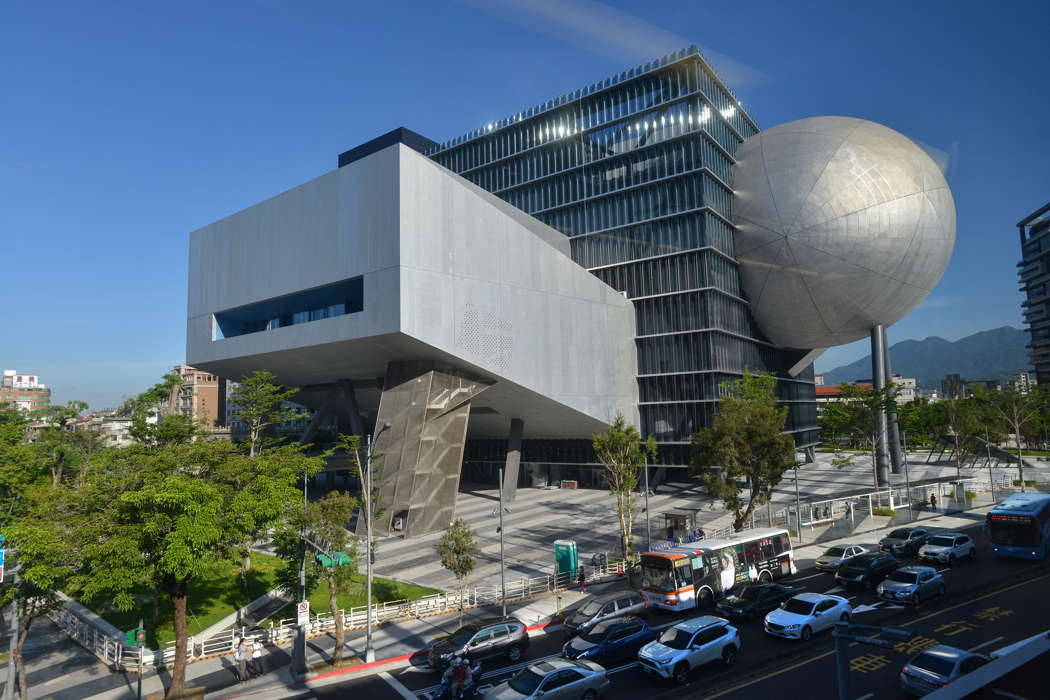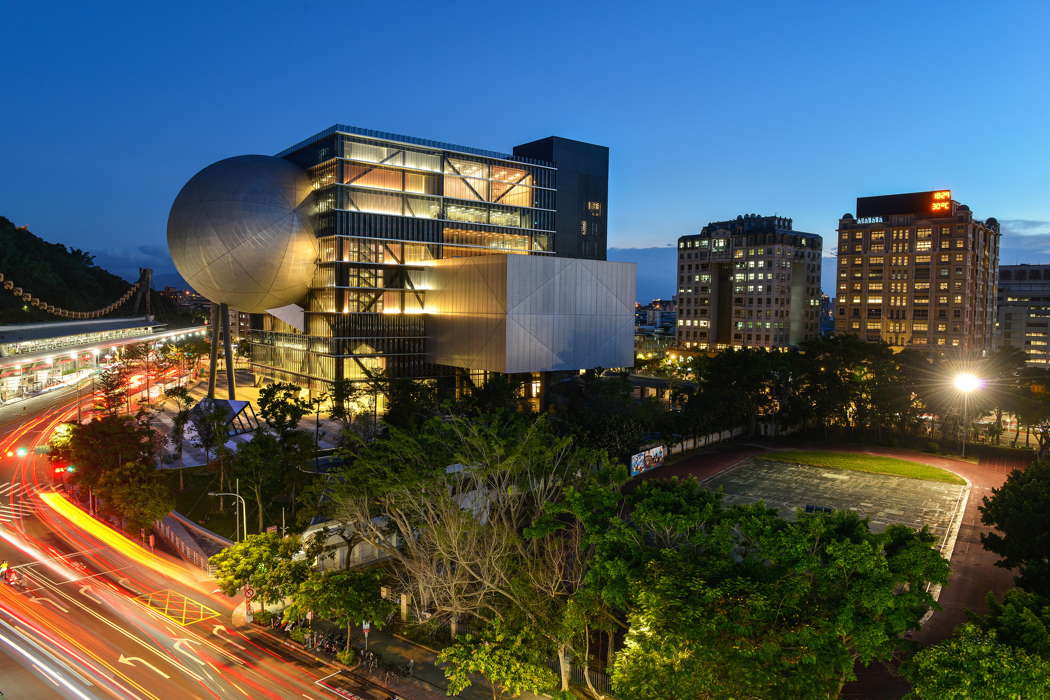 SPONSORED: CD Spotlight. Pure Magic - James Brawn's continued Beethoven Odyssey, awaited by Andrew Schartmann.
SPONSORED: CD Spotlight. Pure Magic - James Brawn's continued Beethoven Odyssey, awaited by Andrew Schartmann.
All sponsored features >>
 DISCUSSION: John Dante Prevedini leads a discussion about Music and the Visual World, including contributions from Celia Craig, Halida Dinova and Yekaterina Lebedeva.
DISCUSSION: John Dante Prevedini leads a discussion about Music and the Visual World, including contributions from Celia Craig, Halida Dinova and Yekaterina Lebedeva.
 SPONSORED: CD Spotlight. An Encyclopedic Recital - Elizabeth Moak plays Judith Lang Zaimont, heard by the late Howard Smith.
SPONSORED: CD Spotlight. An Encyclopedic Recital - Elizabeth Moak plays Judith Lang Zaimont, heard by the late Howard Smith.
All sponsored features >>
Taiwan's New Landmark
Taipei Performing Arts Centre is to open in Summer 2022
Considered Asia's most important cultural development in 2022, Taipei Performing Arts Centre will open to the public in summer 2022. The new spectacular landmark of Taiwan's capital city will become the epicentre of the island's vibrant contemporary culture where no subject matter or technical demand is off limits.
Commissioned by the Taipei City Government to foster the development of the arts, the building has been designed by a global team of the architecture practice, Office for Metropolitan Architecture (OMA), led by architect Rem Koolhaas and David Gianotten, in collaboration with local architecture firm Kris Yao | Artech and engineering company Arup.
The monumental 59,000-square-metre complex floats above the bustle of Taipei's famous Shilin Night Market, renowned for its pulsating street life and as an international foodie destination. The futuristic design shatters the standardised model of contemporary theatres and embraces inclusivity, reflecting the liveliness and open-mindedness of Taipei and its people.

The new Taipei Performing Arts Centre in September 2021. Photo © 2021 OMA/Chris Stowers
Taipei Performing Arts Centre comprises three theatres plugged into a lifted central cube that invites the city's street life on site. The spherical eight-hundred-seat proscenium theatre, Globe Playhouse, resembles a planet docking against the cube. Grand Theatre is a fifteen-hundred-seat space for a wide variety of performing arts genres. Opposite to it and on the same level is the eight-hundred-seat multiform theatre, Blue Box, for the most experimental performances. When coupled, the two theatres become the 2,300-seat Super Theatre, a massive space with factory quality. Equipped with facilities to meet the most challenging pyrotechnical demands of contemporary theatre, the spaces have been specially designed to offer new theatrical opportunities.
The general public, with or without a ticket, is invited into the center through a public loop that runs through the theatre's infrastructure and production spaces typically hidden from view. Portal windows along the loop allow visitors to peer into performances and technical spaces between the theatres.
Taipei Performing Art Centre will become the new headquarters for Taiwan's numerous performing arts groups embracing cutting-edge theatre, contemporary dance, musical theatre, traditional opera and puppet theatre, children's theatre as well as serve as a laboratory for cross art-form experimentations and new creations.
Liu Ruo-yu, Chairman of Taipei Performing Arts Centre, says: 'OMA has created for Taipei a world class arts centre for the world. We look forward to welcoming audiences as well as artists from across the globe to work with Taiwanese artists to create new works that respond to most urgent issues facing our time. We hope Taiwan will learn from the world through these international collaborations, as the world gains a greater understanding of the history, culture and people of Taiwan.'
Austin Wang, CEO of Taipei Performing Arts Centre, comments: 'The opening of Taipei Performing Arts Centre is a major milestone for Taipei becoming an international cultural arts hub. What started as an idea in 1997 and became a visual concept designed by OMA in 2007, is now an exciting reality for 2022 for all our public to enjoy. Our mission is to become the centre of creativity for Taiwan's contemporary life, where diverse talents and points of views across generations can mingle and flourish.'
David Gianotten, OMA managing partner/architect, explains: 'With three theatres plugged into a central cube and a public loop, Taipei Performing Arts Centre creates new internal workings of performing spaces, inspiring unimagined theatrical possibilities. This is a new kind of theatre for artists, audiences and the public to explore the creative life in novel ways.'
Rem Koolhaas, OMA founding partner, adds: 'Taipei has a unique kind of creative energy that extends to every aspect of life. Taipei Performing Arts Centre, formed with a strong technical core and the more emotional theatres docked against it in mutual dependency, at once embodies new organization for theatre, and works as a fresh, intelligent icon that encapsulates the city's creativity.'

The new Taipei Performing Arts Centre in September 2021. Photo © 2021 OMA/Chris Stowers
According to the engineering partner, Arup, the design of the new structure was inspired by a traditional Chinese wood block puzzle. The acoustics, scenography and lighting systems are designed for performances ranging from classical Chinese opera to modern dance and rock concerts.
Taipei City Government's Department of Cultural Affairs was established in 1999 as the first municipal department dedicated to culture in the Republic of China (Taiwan). The department's role is defined by its four divisions: International Affairs and Policy Making; Cultural Preservation and Heritage; Arts and Humanities; and Public and Community Art Development. The department additionally oversees subordinate organisations including the Taipei Symphony Orchestra, the Taipei Chinese Orchestra, the Taipei Fine Arts Museum, the Taipei Cultural Centre, the Taipei City Archives and Zhongshan Hall and the new Taipei Performing Arts Centre. Since its inception, the Department of Cultural Affairs of the Taipei City Government has brought significant issues regarding cultural policy to the public’s attention, and has been instrumental in presenting numerous public events to enhance the city's cultural life.
At a ceremony on the afternoon of 7 August 2022, the Mayor of Taipei, Ko Wen-je, inaugurated Taipei Performing Arts Center (TPAC), considered Asia's most important cultural development in 2022 and a new landmark for Taiwan's capital city. Attended by dignitaries including TPAC's chairman Liu Ruo-yu, CEO Austin Wang and the architects Rem Koolhaas and David Gianotten of the Office for Metropolitan Architecture (OMA), the ceremony was immediately followed by an opening concert featuring the first performance of Taiwanese composer Nan-Chang Chien's Symphony No 5, 'Taipei', performed by the Taipei Symphony Orchestra.
Posted 2 January 2022 and updated 8 August 2022 by Dennis Chang

CLASSICAL MUSIC ARTICLES ABOUT TAIWAN


